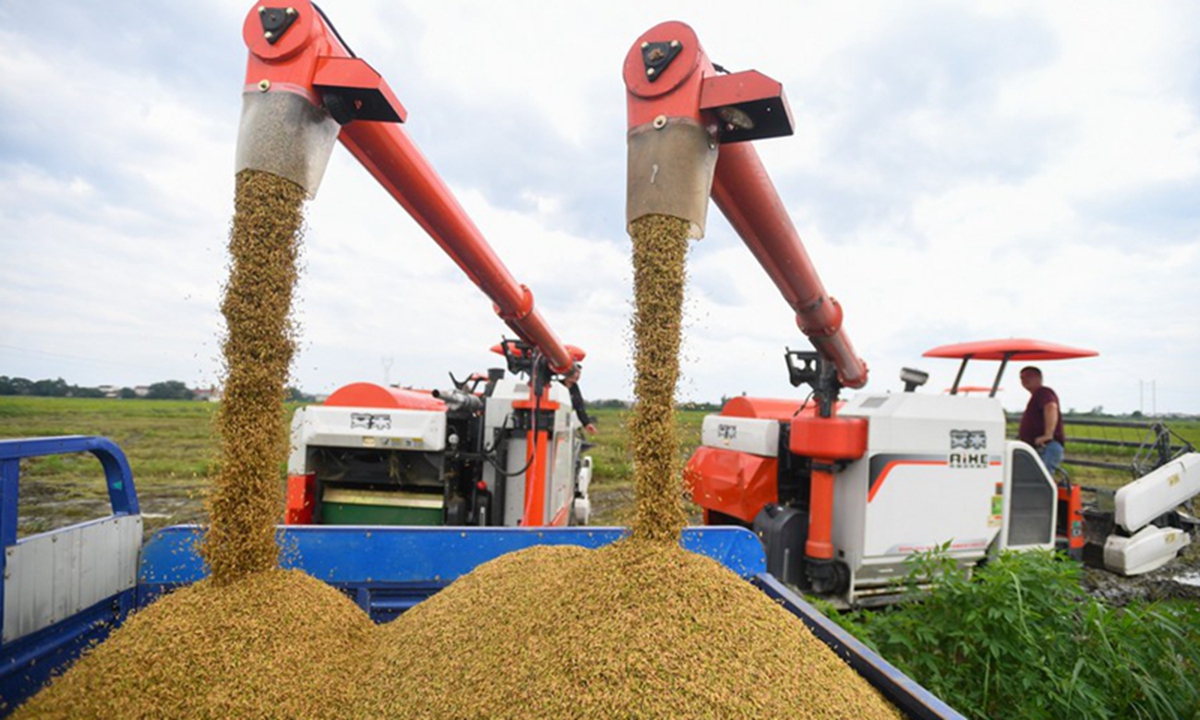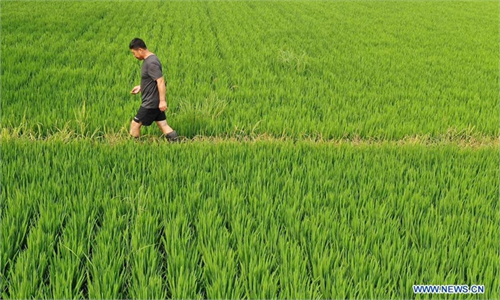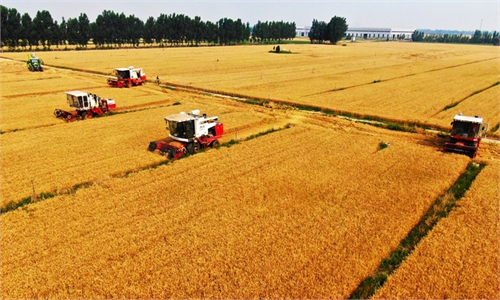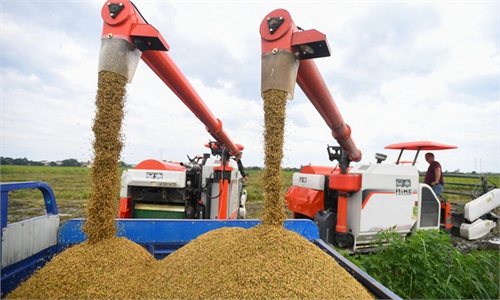
Photo: Xinhua
While global food prices finally fell after experiencing 12 consecutive months of increases, vigilance is still needed to stave off uncertainties facing the international food supply.
According to the United Nation Food and Agriculture Organization (FAO), its latest monthly food price index, which tracks the international prices of commonly traded food commodities, averaged 124.6 points in June, down from 127.8 in May but still up 33.9 percent year-on-year. The June figure also marked the first month-on-month decline after advancing for 12 straight months.
Despite the minor correction, it is worth noting that the global food inflation is currently at a level unseen in almost a decade, which is why countries around the world still need to be cautious toward the potential adverse impacts brought by the high food prices and increased volatility in the future.
With the global economy recovering from the pandemic hit in 2021, demand for food is expected to grow, which may further aggravated food shortages in some developing countries that rely heavily on imports of staple foods. According to the latest Crop Prospects and Food Situation Report by the FAO, 45 countries, mostly in Africa and Asia, require external assistance for food.
Against this backdrop, some Western media outlets often link the food price rise to Chinese demand, but the fact is that the so-called Chinese appetite for grain is far from playing any major role in the recent round of global food price surge. China's imports of wheat, rice and corn account for only a small proportion of the global trade of each grain, which stood at 8.38 million tons, 11.3 million tons and 2.94 million tons in 2020, representing 4.49 percent, 4.91 percent and 6.13 percent of the global trade of wheat, rice and corn. Overall, China's grain imports account for merely 0.9 percent of global grain production.
With a population of 1.4 billion, China has always adhered to its basic bottom line in global grain trade by ensuring stable grain production so as to avoid relying too much on the international market for food security. Last month, China's agriculture minister said that the country reaped another bumper summer harvest in 2021, with summer grain output reaching a new record, which has laid a solid foundation for ensuring the total grain output still above 650 billion kilograms this year.
In fact, there are many factors that may have contributed to the recent surge in global food prices, including but not limited to the easing monetary policies adopted by some major economies and decreased grain output by some food-exporting countries.
To add insult to injury, the continuing drought in several major grain-producing regions such as Brazil may further exacerbate the food supply shortage to a certain extent. Moreover, the cost of global maritime transport has also soared sharply over the past year, resulting in higher transport costs for grain trade.
Thus, it is generally expected that global food prices may remain at high levels in the coming future, and the world needs to be vigilant about its potential impact on the developing world.



